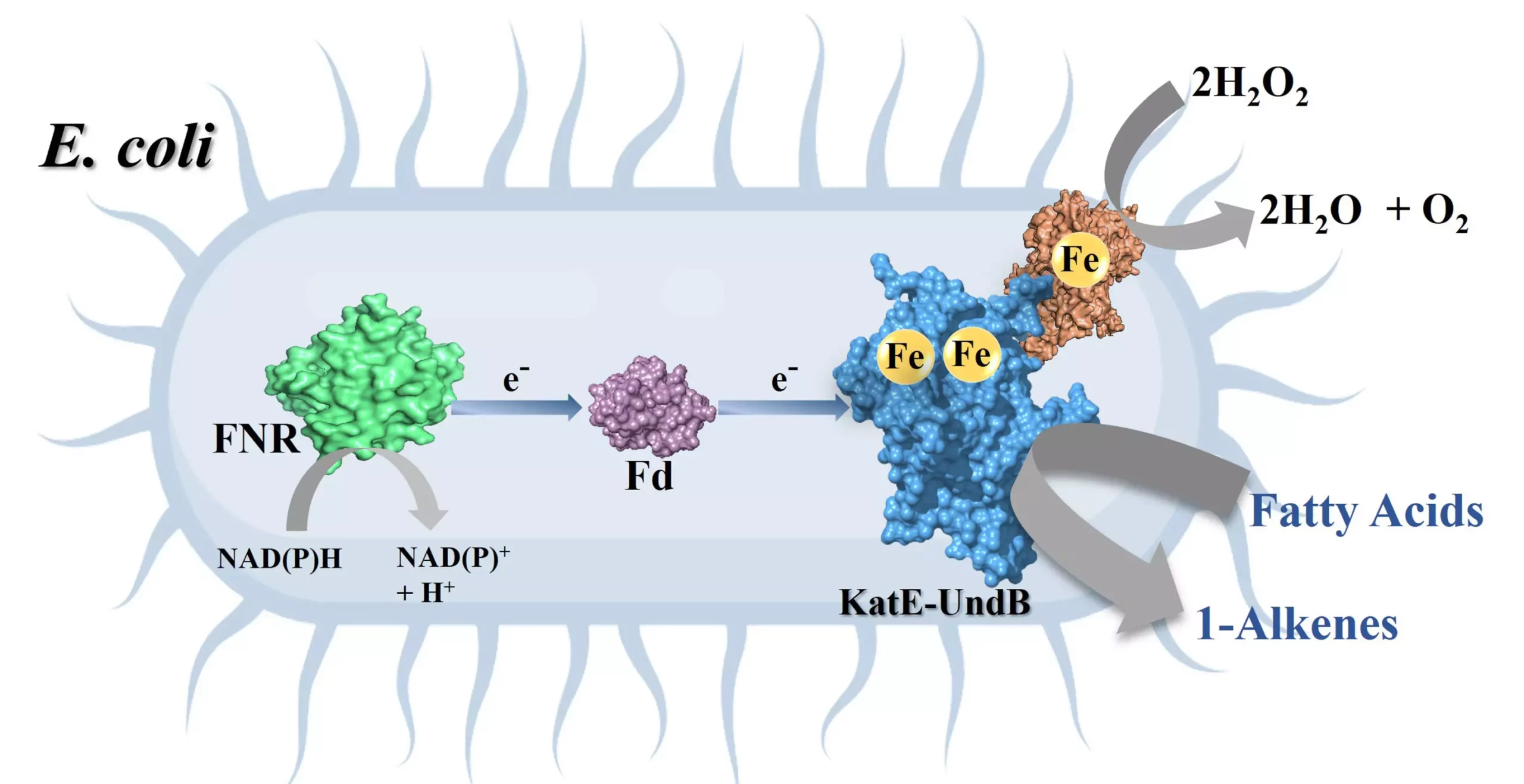As the world grapples with the urgent need to transition from fossil fuels toward sustainable energy sources, innovative research is paving the way for greener alternatives. Recent findings from the Indian Institute of Science (IISc) have opened a new chapter in biofuel production, addressing the dual challenges of energy sustainability and environmental conservation. The team at the Department of Inorganic and Physical Chemistry has crafted an enzymatic platform capable of transforming fatty acids—abundant and cost-effective resources—into valuable hydrocarbons, specifically 1-alkenes. These compounds have gained attention for their potential as “drop-in” biofuels that can seamlessly integrate with current fuel infrastructures.
Understanding Hydrocarbons and Their Potential
Hydrocarbons have always been at the heart of industrial applications, fueling sectors ranging from energy to manufacturing. In the context of biofuels, these hydrocarbons present a unique opportunity to reduce reliance on fossil fuels and combat pollution. The ability to derive hydrocarbons from biological resources such as fatty acids not only holds promise for sustainable fuel production but also aligns with the growing demand for renewable energy solutions. Recognizing this, scientists aim to harness microorganisms as “factories” for synthesizing massive quantities of hydrocarbons, thereby catalyzing a larger shift toward more sustainable energy practices.
Exploring the Challenges: Enzyme Efficiency and Inactivation
Past research efforts have identified an extraordinary enzyme known as UndB, celebrated for its capacity to convert fatty acids into 1-alkenes at remarkable speeds. However, the breakthrough came with constraints. The enzyme’s efficiency decreased over time, largely due to the accumulation of hydrogen peroxide (H2O2)—a detrimental byproduct generated during the conversion reaction. This revelation underscored a critical barrier in the quest for efficient biofuel production, as conventional methods fell short of maintaining enzyme activity through multiple cycles.
In response, IISc researchers cleverly introduced catalase, an enzyme that decomposes H2O2. The inclusion of catalase led to a staggering enhancement in UndB’s efficiency, propelling its activity from a mere 14 turnovers to an impressive 265 turnovers. This innovation exemplifies the sophisticated approach scientists take to address biochemical challenges, underscoring a critical aspect of modern enzymology.
Crafting a New Biocatalyst: Innovations at the Genetic Level
With the efficiency barriers identified and partially overcome, the IISc team advanced their research by creating an artificial fusion protein, combining UndB with catalase through genetic engineering. By employing plasmid vectors, they managed to introduce this fused genetic code into Escherichia coli (E. coli) bacteria, effectively transforming these microbes into whole-cell biocatalysts capable of producing 1-alkenes from fatty acids. However, this endeavor was not without challenges. Membrane proteins like UndB can be toxic at higher concentrations and notoriously difficult to work with due to their insolubility in aqueous environments.
To refine the functionality of their chimeric protein, the researchers explored the intricate dance of electron supply, testing multiple “redox partner” proteins that facilitate electron transfer to UndB. Their experiments culminated in using ferredoxin and ferredoxin reductase, along with nicotinamide adenine dinucleotide phosphate (NADPH). The results were astonishing—an impressive 95% conversion efficiency of fatty acids to 1-alkenes, proving the potential viability of this biocatalytic process.
Implications for Industry and Future Collaborations
The implications of this research extend far beyond the laboratory. The specificity of UndB, without generating byproducts during the conversion process, offers a purer product ideal for use in biofuels. Furthermore, the versatility of the biocatalyst—capable of converting various fatty acid types into 1-alkenes and even producing styrene, a key chemical in the polymer industry—demonstrates its potential as a valuable industrial tool.
With a patent application underway and industry partnerships on the horizon, the IISc team envisions scaling this platform for mass production. Their work underscores a paradigm shift in biofuel technology, highlighting how cutting-edge scientific advancements can lead to sustainable solutions for some of our most pressing energy challenges.
This research not only signifies a breakthrough in biotechnological innovation, but it also stands as a beacon of hope in the commitment towards cleaner, more sustainable energy futures. The greater the investment in these renewable pathways, the closer we move to a future that pays respect to our planet while meeting the energy demands of an ever-growing global population.

